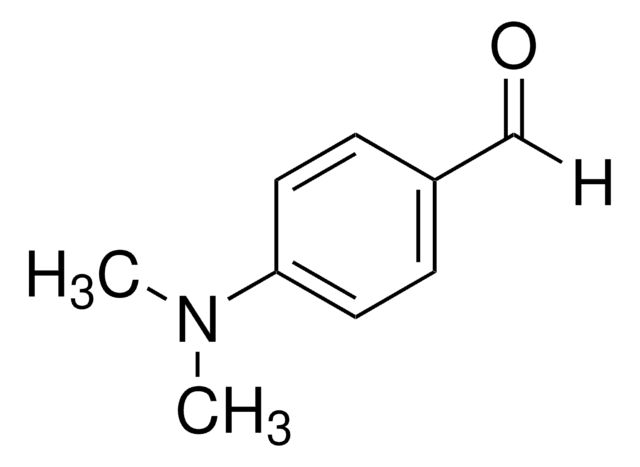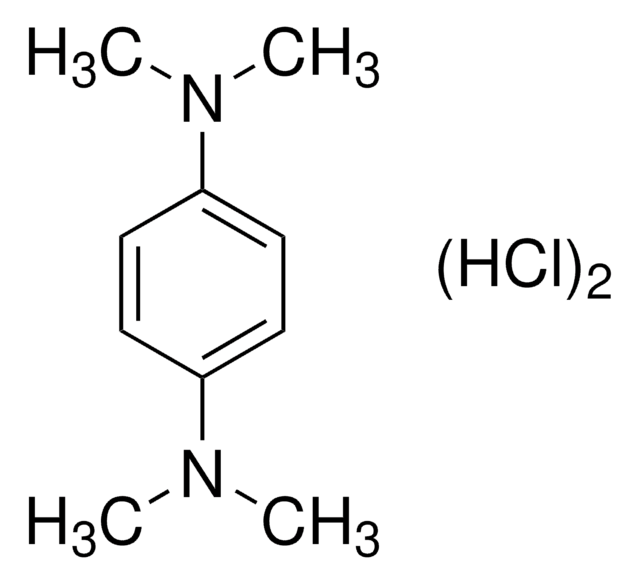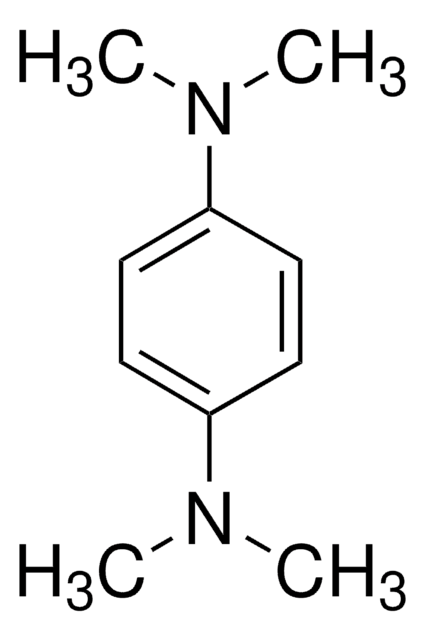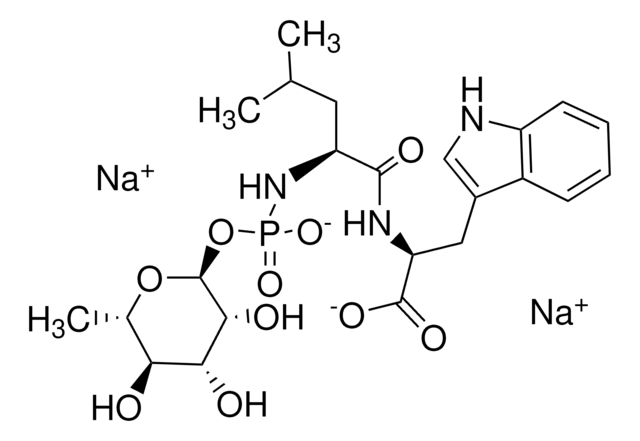18502
Oxidase Reagent according to Gordon-McLeod
suitable for microbiology
Synonym(s):
Gordon-McLeod Reagent
About This Item
Recommended Products
Agency
according to ISO 9308-1:2014
Quality Level
product line
BioChemika
shelf life
limited shelf life, expiry date on the label
composition
N,N-dimethyl-p-phenylenediamine hydrochloride, 0.15 g
water, 10 mL
packaging
pkg of 100 mL
storage condition
(Tightly closed)
technique(s)
microbe id | specific enzyme detection: suitable
antibiotic activity spectrum
Gram-negative bacteria
application(s)
clinical testing
environmental
food and beverages
pharmaceutical
microbiology
suitability
Plesiomonas spp.
Aeromonas spp.
Neisseria spp.
Pseudomonas spp.
bacteria
Related Categories
General description
Application
Signal Word
Danger
Hazard Statements
Precautionary Statements
Hazard Classifications
Resp. Sens. 1
Storage Class Code
10 - Combustible liquids
WGK
WGK 2
Flash Point(F)
Not applicable
Flash Point(C)
Not applicable
Personal Protective Equipment
Choose from one of the most recent versions:
Certificates of Analysis (COA)
Sorry, we don't have COAs for this product available online at this time.
If you need assistance, please contact Customer Support.
Already Own This Product?
Find documentation for the products that you have recently purchased in the Document Library.
Customers Also Viewed
Articles
Vibrios are motile, curved or comma-shaped bacilli and have a single polar flagella with sheet proteins. They are often found in open water, freshwater and saltwater.
On the Trail of Campylobacter - The Campylobacter is one of the leading causes of human gastroenteritis. Common Campylobacter species C. jejuni, C. coli, and C. lari are responsible for most cases of campylobacteriosis. However, other species, like C. fetus, which causes spontaneous abortions, have also been associated with human illness. Campylobacter are Gram-negative, spiral-shaped, microaerophilic and motile bacteria with uni- or bi-polar fl agella
Chromogenic media enable the selective detection of S. aureus, which produce bluish-green colonies that are clearly differentiated from other species.
For microbiologists the most fundamental stain was developed in 1884 by the Danish bacteriologist Hans Christian Gram.
Protocols
General guidance for the detection and enumeration of Enterobacteriaceae in food according to EN-ISO 8523:1991 and EN-ISO 4832:1991, respectively.
In recent years it has been recognized that Listeria is an important public health problem. The disease affects primarily people of advanced age, pregnant women, newborns, and adults with weakened immune systems.
Our team of scientists has experience in all areas of research including Life Science, Material Science, Chemical Synthesis, Chromatography, Analytical and many others.
Contact Technical Service





